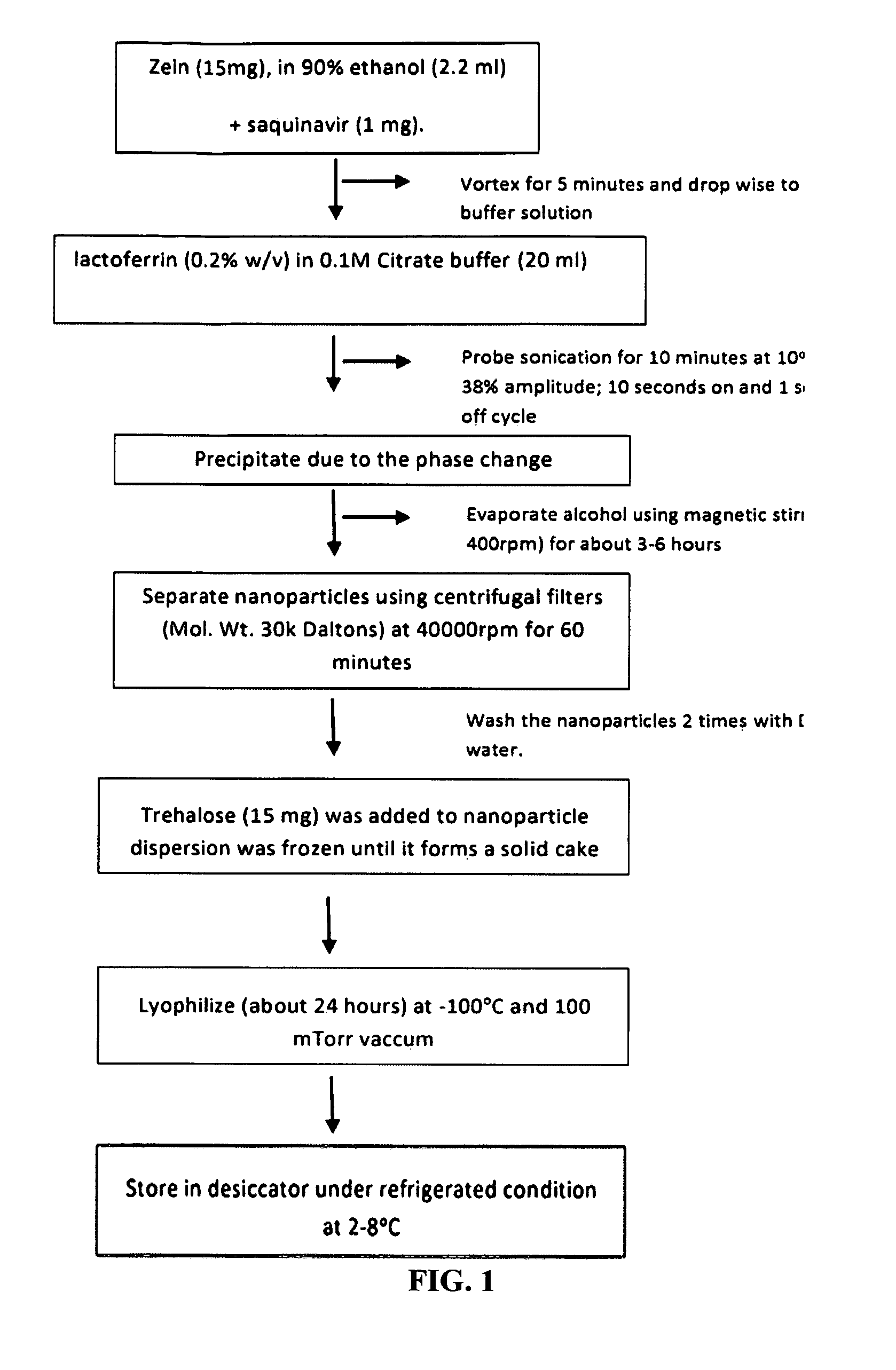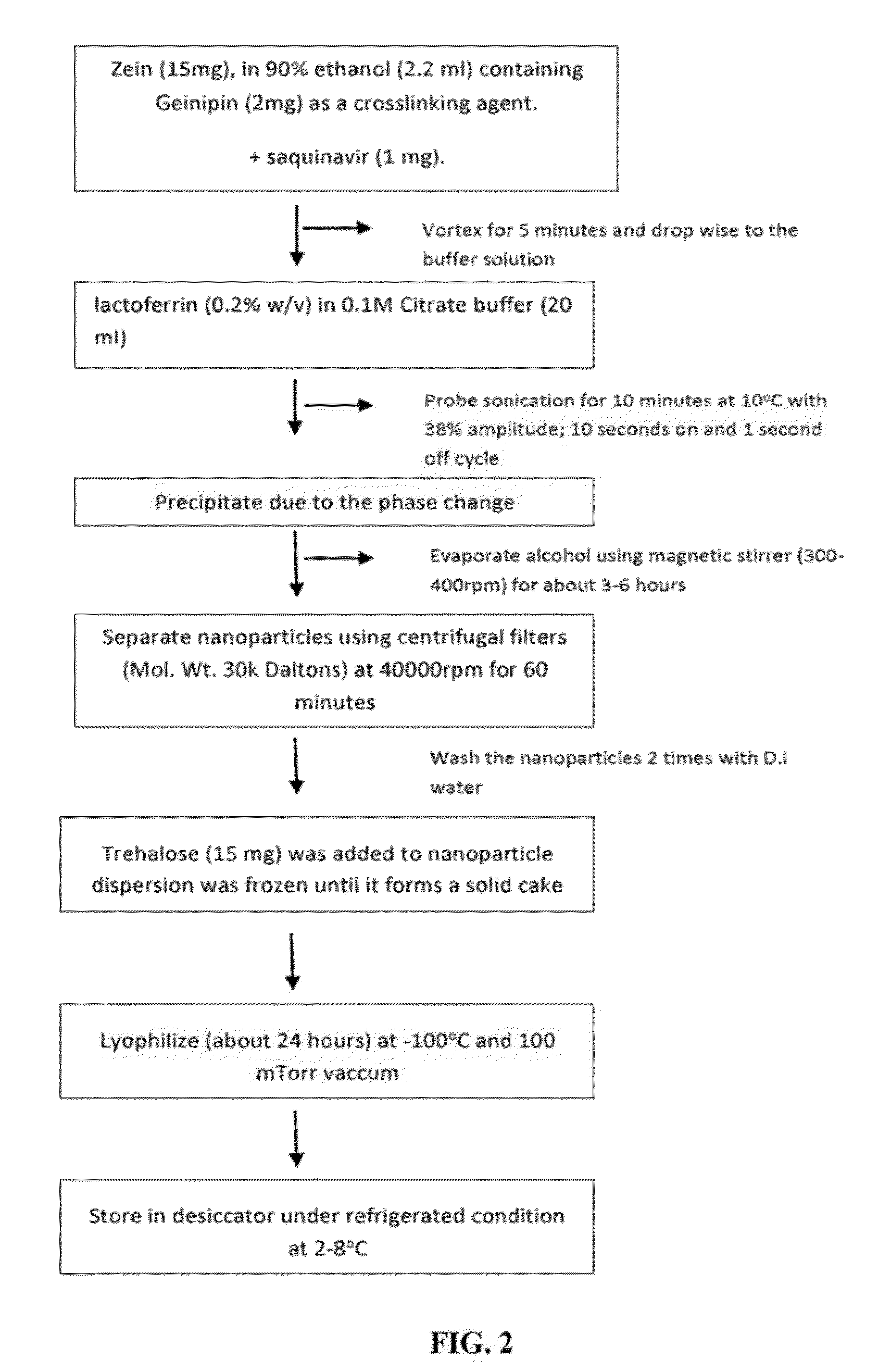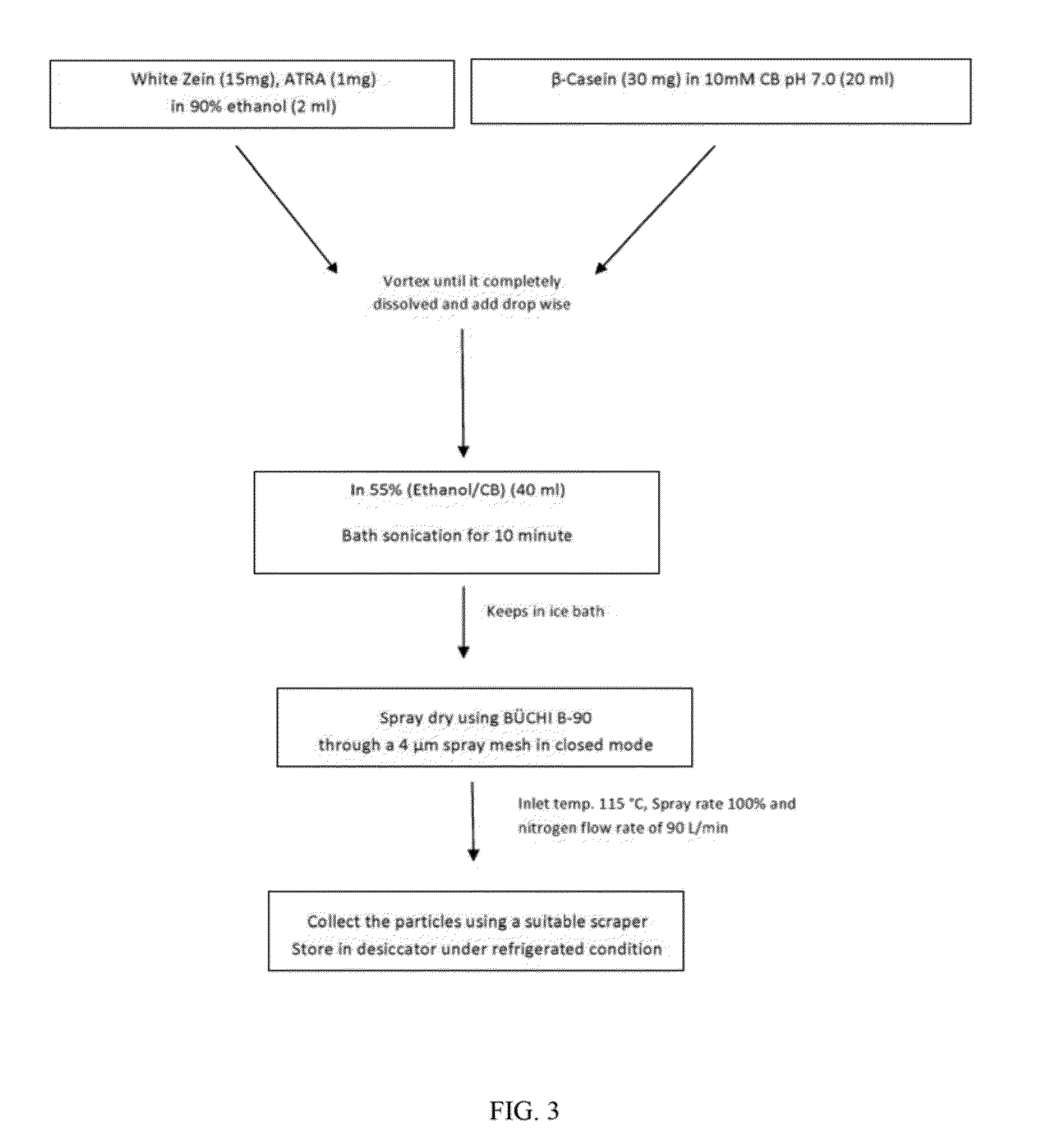Novel core-shell nanoparticles for oral drug delivery
a nanoparticle and core shell technology, applied in the field of oral nanoparticle drug delivery system, can solve the problems of poor water solubility, poor chemical stability of current formulations, and high risk of inappropriate dosing for 40% of the world's population
- Summary
- Abstract
- Description
- Claims
- Application Information
AI Technical Summary
Benefits of technology
Problems solved by technology
Method used
Image
Examples
example 1
Materials and Methods for Zein-Casein Nanoparticles
Phase Separation Method.
[0156]15 mg of white zein form corn (Grade F6000) was dissolved in 2 ml of 90% EtOH so that the total concentration was 0.5% (w / v). To this ethanolic solution, all trans retinoic acid (ATRA) was added from a stock solution at an optimum concentration of 1 mg. The organic phase was added drop wise to 0.1 M citrate buffer solution containing 0.15% (w / v) beta-casein (Sigma Cat #C6905) under probe sonication. Optionally a stabilizer (e.g., gum arabic at 0.1% w / v) may be added during this step or added to the 0.1 M citrate buffer prior to drop wise addition of organic phase. The probe sonication was set to 38% amplitude for 10 min (10 sec on and 1 sec off cycle). The rein-casein dispersion was left under a magnetic stirrer (300 rpm) for 4 hours to evaporate the EtOH. Further, the nanoparticles were separated using Millipore centrifugal filters (MWCO 5-10 kDa; 40,000) rpm for 60 minutes) and washed several times wi...
example 2
Influence of Solvents
[0180]To identify suitable solvents and to stabilize the nanoparticles using a nanospray dryer, a model hydrophobic compound was used (curcumin) as an encapsulant in zein nanoparticles.
[0181]As shown in Table 4, various spray drying solvents had different effects on the zein nanoparticles, including effects on size, PDI and zeta potential.
TABLE 4Affects of various solvents on nanoparticle characteristics.ZetaSolventsClassPSPDIpotentialObservationWater————Not SolubleEtOH / water (2:1)Class 340361−5.2AggregatesEtOH / CB 7.4 (2:1)Class 36640.557−8.82AggregatesEtOH / PBS 7.4 (2:1)Class 3851.50.694−6.02AggregatesIPA / water (2:1)Class 38530.682−6.67AggregatesMeOH / waterClass 212003−11Aggregates(2:1)Acetone / waterClass 331901−16.3Aggregates(2:1)DCM / EtOH (1:1)Class 29200.81−9.3Aggregates
[0182]The selection of the organic solvent or mixtures of organic solvents was initially considered for the solubilization of zein prior to spray drying. Several organic mixtures were used to con...
example 3
Influence of Stabilizers
[0183]As shown in Table 5, various stabilizers used in spray drying had different effects on the zein nanoparticles, including effects on size, PDI, zeta potential and aggregation characteristics.
TABLE 5Affects of stabilizers on nanoparticle characteristics.Materials (1:1ratio in EtOH aq)PSPDIZeta potentialObservationNone40361−5.2AggregatesCitric acid6640.557−8.82AggregatesSLS7420.727−27TransparentTween 80 (1%22930.881−22Stickyv / v)Tween 8026131−34.8Aggregates(0.1% v / v)Pluronic F6815751−29.1AggregatesLecithin———StickyLecithin-958.50.863−23AggregatesPluronicPVP72731−13.9AggregatesPEG 20 kDa5480.572−15AggregatesTPGS 100066361−25.3AggregatesGum arabic46121−17AggregatesCasein sodium181.30.69−38TransparentsaltBeta-casein114.90.304−42.1TransparentDextran13140.896−15AggregatesPSA31271−18.8AggregatesSLS, sodium lauryl sulphate; PVP, polyvinylpyrrolidine; PSA, polysialic acid.
[0184]Zein and stabilizer in a ratio of 1:1 were added in an approximate volume of 60% EtOH (i...
PUM
| Property | Measurement | Unit |
|---|---|---|
| molecular weight | aaaaa | aaaaa |
| molecular weight | aaaaa | aaaaa |
| particle size | aaaaa | aaaaa |
Abstract
Description
Claims
Application Information
 Login to View More
Login to View More - R&D
- Intellectual Property
- Life Sciences
- Materials
- Tech Scout
- Unparalleled Data Quality
- Higher Quality Content
- 60% Fewer Hallucinations
Browse by: Latest US Patents, China's latest patents, Technical Efficacy Thesaurus, Application Domain, Technology Topic, Popular Technical Reports.
© 2025 PatSnap. All rights reserved.Legal|Privacy policy|Modern Slavery Act Transparency Statement|Sitemap|About US| Contact US: help@patsnap.com



